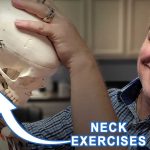Neck health is a crucial aspect of our overall well-being, and it’s no wonder that people seek various exercises to maintain or improve it. One commonly mentioned exercise involves placing your hand on your head and pushing against it. This is known as an isometric exercise, and while it can offer some benefits, it’s essential to understand its limitations and how it fits into a comprehensive neck health routine. In this blog post, we’ll delve into the world of isometric neck exercises and explore their place in a well-rounded neck care regimen.
Isometric Neck Exercises: The Basics:
Isometric exercises involve contracting a muscle without changing its length. In the context of neck health, this often means placing your hand against your head and pushing against it, creating resistance. While these exercises can be effective at building strength, they come with specific considerations.
The Importance of Full Range of Motion:
One potential drawback of relying solely on isometric exercises is that they encourage muscles to adapt to a limited range of motion. Imagine working only a small portion of your muscle’s potential length; over time, it may become challenging to extend or contract the muscle fully. This could limit your neck’s flexibility and range of motion.
Combining Isometrics with Dynamic Exercises:
To address this limitation, it’s advisable to combine isometric exercises with dynamic movements that encourage a full range of motion. For instance, in addition to isometric neck pushes, incorporate exercises that involve gentle tilting, turning, and sliding your head in various directions. These dynamic exercises help train your muscles to work through their complete range, promoting flexibility and preventing stiffness.
The Balanced Approach to Neck Health:
Neck health is not just about building strength; it’s also about maintaining flexibility and preventing stiffness. A well-rounded neck care routine should include exercises that target different aspects of neck health. Isometric exercises can play a role in strengthening specific neck muscles, but they should be complemented with dynamic exercises to ensure your neck maintains its full range of motion.
Consulting a Professional:
If you have concerns about your neck health or are unsure which exercises are best for you, consider consulting a healthcare professional, such as a physical therapist or chiropractor. They can provide personalized guidance and exercises tailored to your specific needs and condition.
Conclusion:
Isometric neck exercises can be a valuable component of a neck care routine, helping to build strength in specific muscles. However, it’s essential to use them in conjunction with dynamic exercises that encourage a full range of motion. A balanced approach to neck health includes a variety of exercises that address strength, flexibility, and overall well-being. By incorporating both isometric and dynamic exercises and seeking professional guidance when needed, you can maintain a healthier and more resilient neck for years to come.




